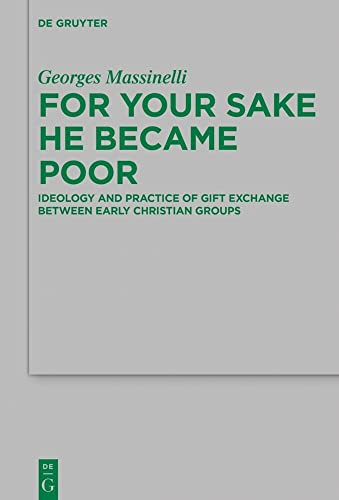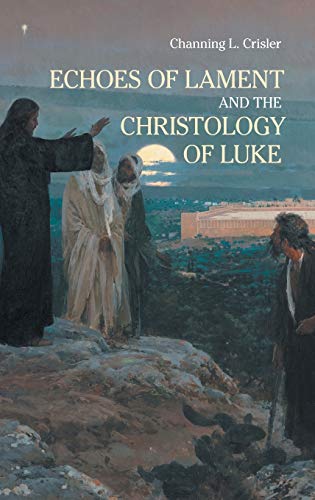After Emmaus: How the Church Fulfills the Mission of Christ
Written by Brian J. Tabb Reviewed By Scott A. LogsdonIf you ask missiologists how they teach missions from the Bible, you may get different answers. In seminary, my missiology professor taught us missions using only two passages. Christians make disciples (Matt 28:18–20) so that the end will come (Matt 24:14). Some of my missionary friends approach every verse of the Bible with a “missional hermeneutic” that sees missions everywhere. Others see missions as everything that God intends to do through his people to make himself known—from evangelism to creation care. Still others argue that missions is just about gospel proclamation in the Holy Spirit and to the end of seeing churches established among all nations. The key question is one of approach: how do we constrain ourselves as we read about mission in the Bible so that we rightly handle God’s Word?
In After Emmaus, Brian Tabb argues that a proper hermeneutical lens for missions is given by Christ himself in Luke 24. Tabb ably demonstrates that Christ traced the relationship between his work, the work of his disciples, and the testimony of the Scriptures in order to provide the church a proper framework for interpreting the Bible both Christologically and missiologically (p. 12).
Tabb begins by examining Luke 24, where Christ emphasized that his suffering, resurrection, and the mission to the nations all follow the script of the Scriptures (p. 23). Notably, only two of these three events had been fulfilled when Christ was speaking. Thus, Christ both reviewed what had happened and previewed what was to come (p. 23).
Drawing on OT quotations and allusions in the NT, Tabb covers how the following are foretold in the Scriptures:
- The substitutionary death of Jesus from the New Testament’s use of Isaiah and Psalms 31 and 118.
- The victorious resurrection of Jesus from Exodus, Psalms 2 and 110, Jonah, and Hosea.
- And the ongoing proclamation of Christ’s work by his witnesses to the nations from Isaiah and Ezekiel.
In reviewing how these events are foretold, Tabb says Jesus clarified the Scriptures for his disciples and, further, granted them understanding so that they could teach the Bible as he did.
To support this claim, Tabb shows that the apostles used many of the same OT passages in much the same way that Jesus did. Even Paul and Barnabas—absent during the events of Luke 24—learned to let OT prophecies guide their ministry activity (Acts 13:46–47). Additionally, during Paul’s defense of the gospel before King Agrippa, he closely followed the same outline Jesus had used (compare Luke 24:44–47 with Acts 26:22–23). Tabb then shows how material in Matthew, John, Romans, and 1 Peter mirrors the emphases of Christ’s discourse in Luke 24. Matthew, for instance, shows how Jesus fulfills Isaiah’s prophecies that the Messiah would heal and offer hope for the Gentiles (p 177). Therefore, Tabb says, “The church today should adopt the same hermeneutical lens in our Bible reading, for it grounds our gospel message and galvanizes us to participate in Christ’s global work” (p 12).
These points lead Tabb to three conclusions. First, like Christ, the church should teach mission from the OT. Second, like Christ, the church should emphasize that the central task of the church is the verbal proclamation of the gospel and making disciples of all nations, resisting attempts to broaden the idea of mission to include everything Christians do in the world. Finally, the church should speak about Christ with courage and clarity, understanding that the disciples of the suffering servant will suffer hardship as they proclaim him among the nations.
After Emmaus is a valuable resource for pastors and missiologists. Tabb invites the reader to join him on a fascinating journey as he plumbs the rich depths of the NT’s use of the OT. Overall, his reasoning and handling of Scripture are sound. Tabb has demonstrated that, indeed, there is a proper missiological lens and that lens is provided by our Lord himself.
Moreover, Tabb contributes to the current discussion of mission by demonstrating a vital biblical link between Christology and missiology. Missiologists may find Tabb’s use of pronouns with mission a bit confusing (variously “the mission,” “Christ’s mission,” “their mission,” or “his people’s mission”); however, by linking Christology and missiology he underscores that “Christ’s own mission is the basis for his people’s mission” (p. 34) and ensures missiology remains subservient to Christ. This link has important implications for missions beyond hermeneutics.
As one point of critique, Tabb would do well to include attention to the NT teaching on union with Christ. While the book focuses on Jesus’s Emmaus road conversation as the framework for Christ-centered missions theology, the outworking of missions implications of union with Christ would greatly enhance his arguments in After Emmaus. The connection between Christology and missiology is best explained by this vital union between Christ and His people. Our living Savior continues to provide his people power for mission through their union with him. Jesus promises to be with his people while they are on mission (Matt 28:20); he chastises Saul for persecuting him (Acts 9:4); Tabb does well to show how the OT promises about Christ are appropriated by the apostles as their own marching orders for mission (Acts 13:47); and he demonstrates how Christ proclaims light to the Gentiles after his resurrection (Acts 26:23). These passages all have greater implications when we understand that Christ lives in us and we in him (Gal 2:20). After all, we struggle with all his energy that he powerfully works within us (Col 1:29). According to the Bible, power and motivation for mission are personal and relational, centered on Christ himself who now lives in his people (Gal 2:20).
Indeed, one might find fertile ground for building upon the missiological implications of union with Christ in order to extend Tabb’s insights in After Emmaus even further. Reading Scripture with Christ and being united with him may reveal the most compelling reason for Christians to participate in Christ’s global work: we go to the ends of the earth because our Savior is still fulfilling the Scriptures today—he is proclaiming repentance and forgiveness of sins in his name to all nations—through his church who lives in union with him by the Spirit!
Scott A. Logsdon
Scott A. Logsdon
McLean Bible Church
Vienna, Virginia, USA
Other Articles in this Issue
This article examines Christopher Nolan’s three most recent films, Interstellar (2014), Dunkirk (2017), and Tenet (2020), through the lens of Christianity’s preeminent theological virtues: love, hope, and faith, respectively...
Syncretism—the blending of two or more religious paradigms—threatens Christian witness around the world...
Revisiting “the Time of Abiathar the High Priest”: Interpretation, Methodology and Ways Forward for Understanding Mark 2:26
by William B. BowesMark 2:26 has presented itself as a difficult textual and historical problem for interpreters...
Give Honor and Vote? A Reflection on the Christian’s Voting Conscience and Romans 13:1–7
by Robert GoldingPaul’s instruction in Romans 13:1–7 can be applied to Christian voting behavior in the West...
Hell for a Single Sin: A Response to Robert Golding’s Asymptotic Theory of Those in Hell
by Paul DirksThis article is a response to Robert Golding’s recent essay, “Making Sense of Hell,” in which he contends for the logic of eternal punishment on the basis of a progressive and asymptotic conception of sin and sinners in hell...







